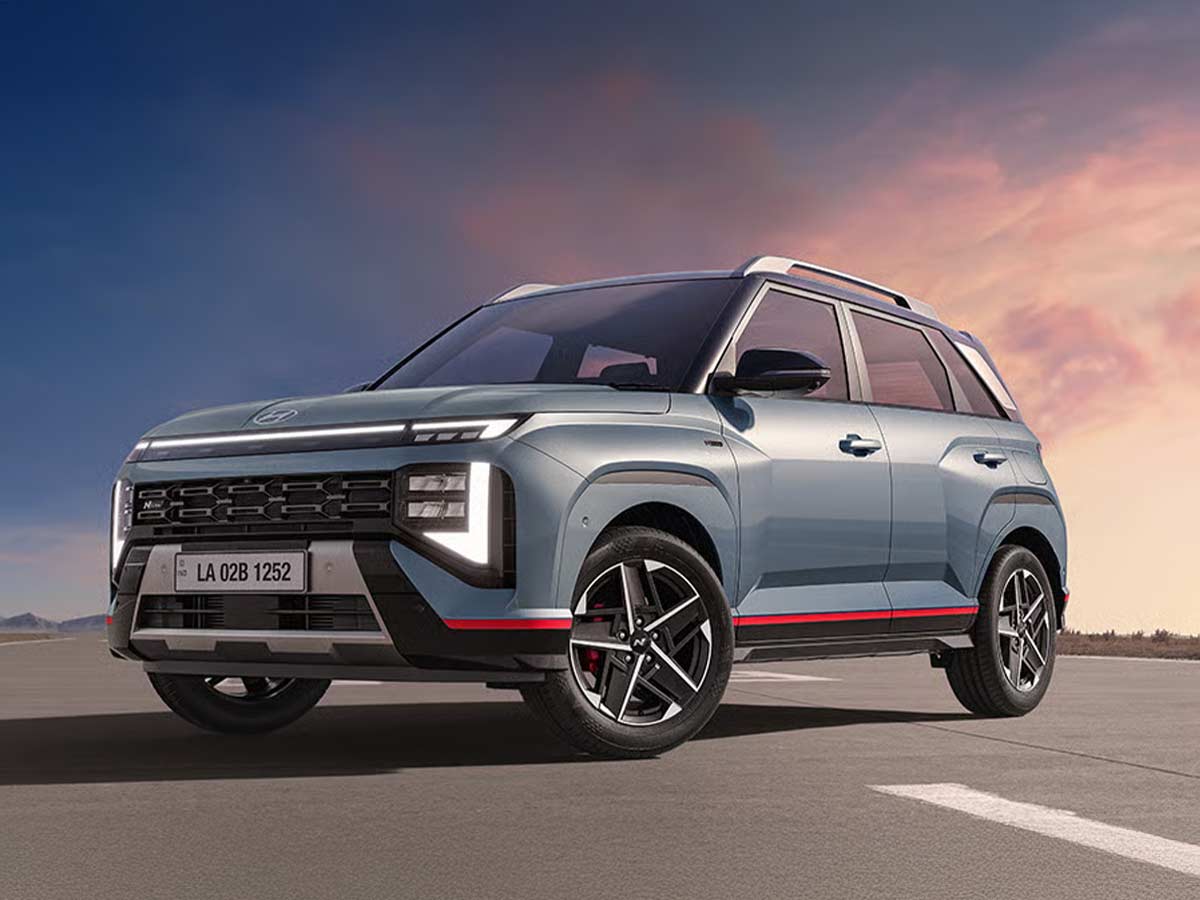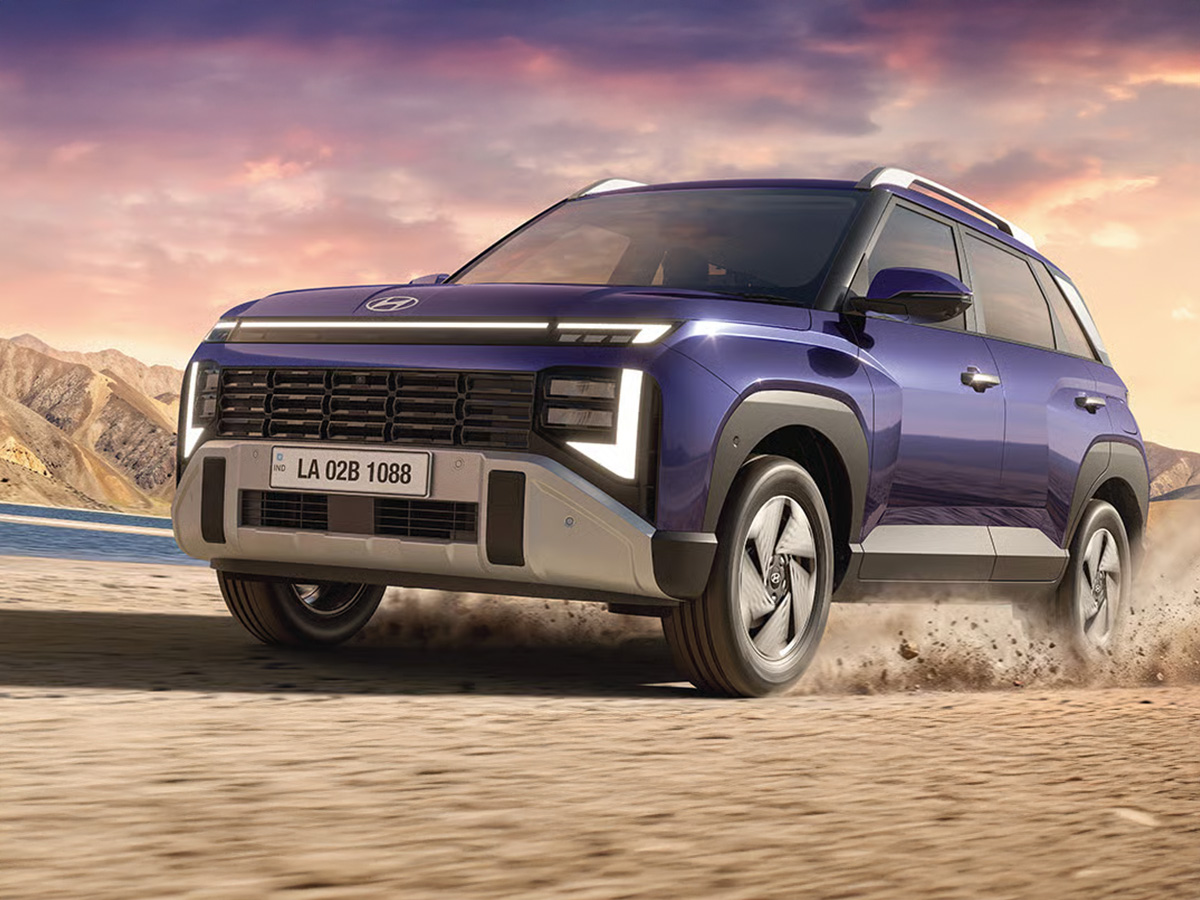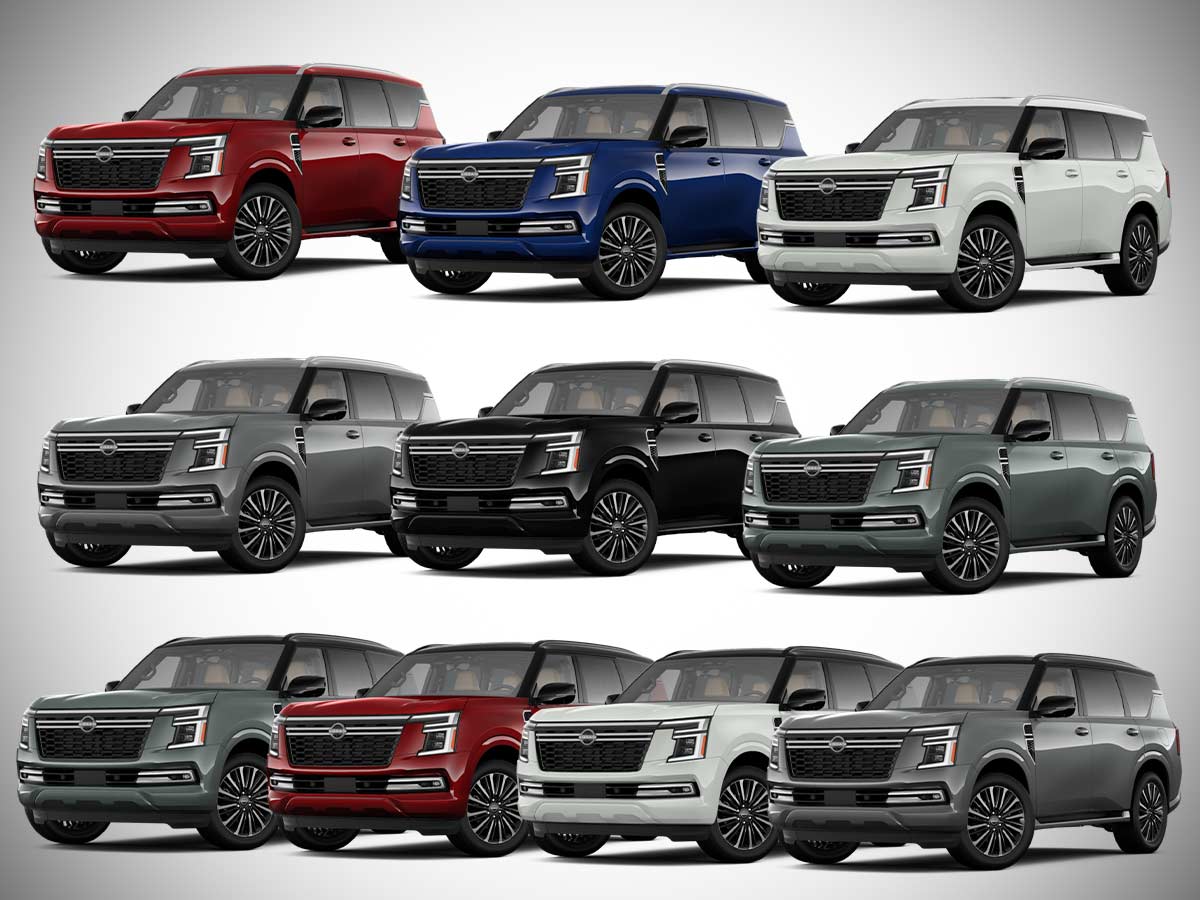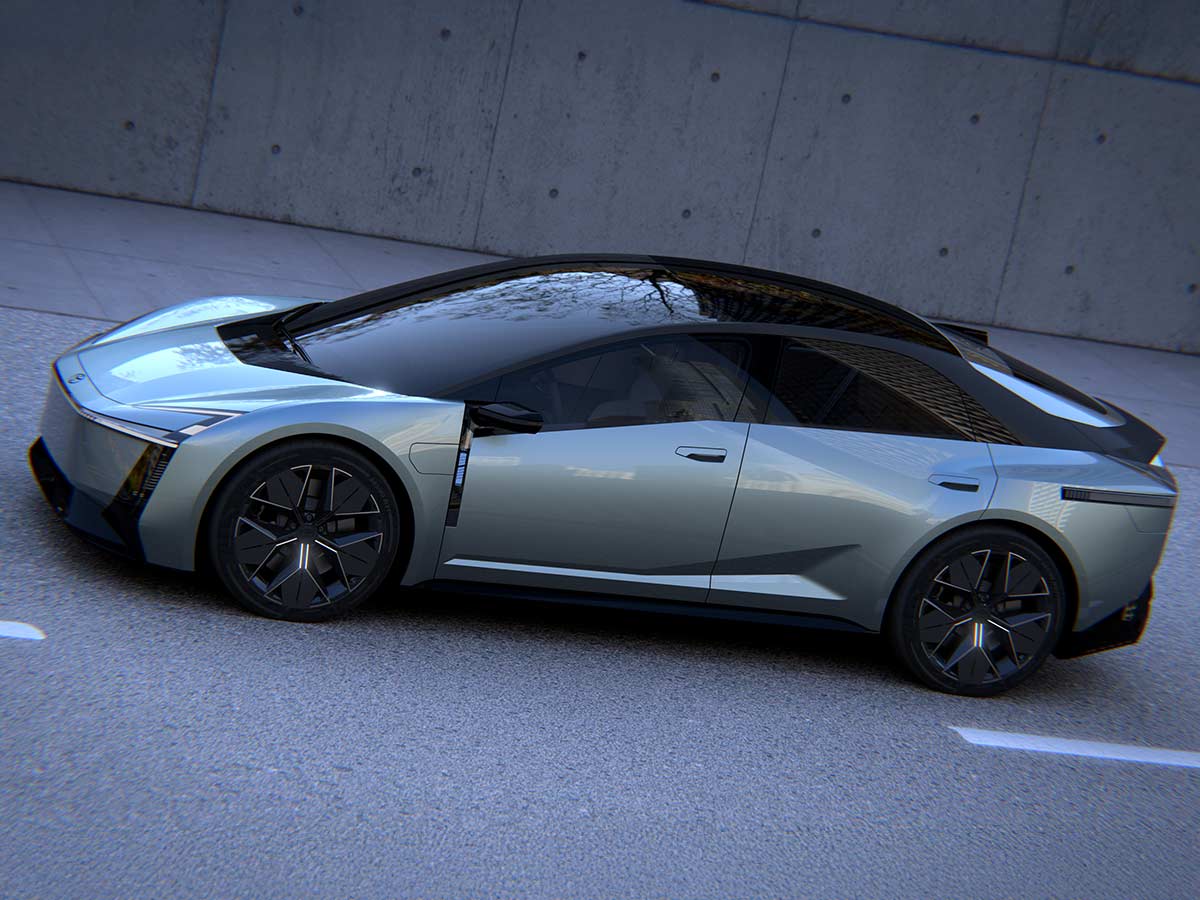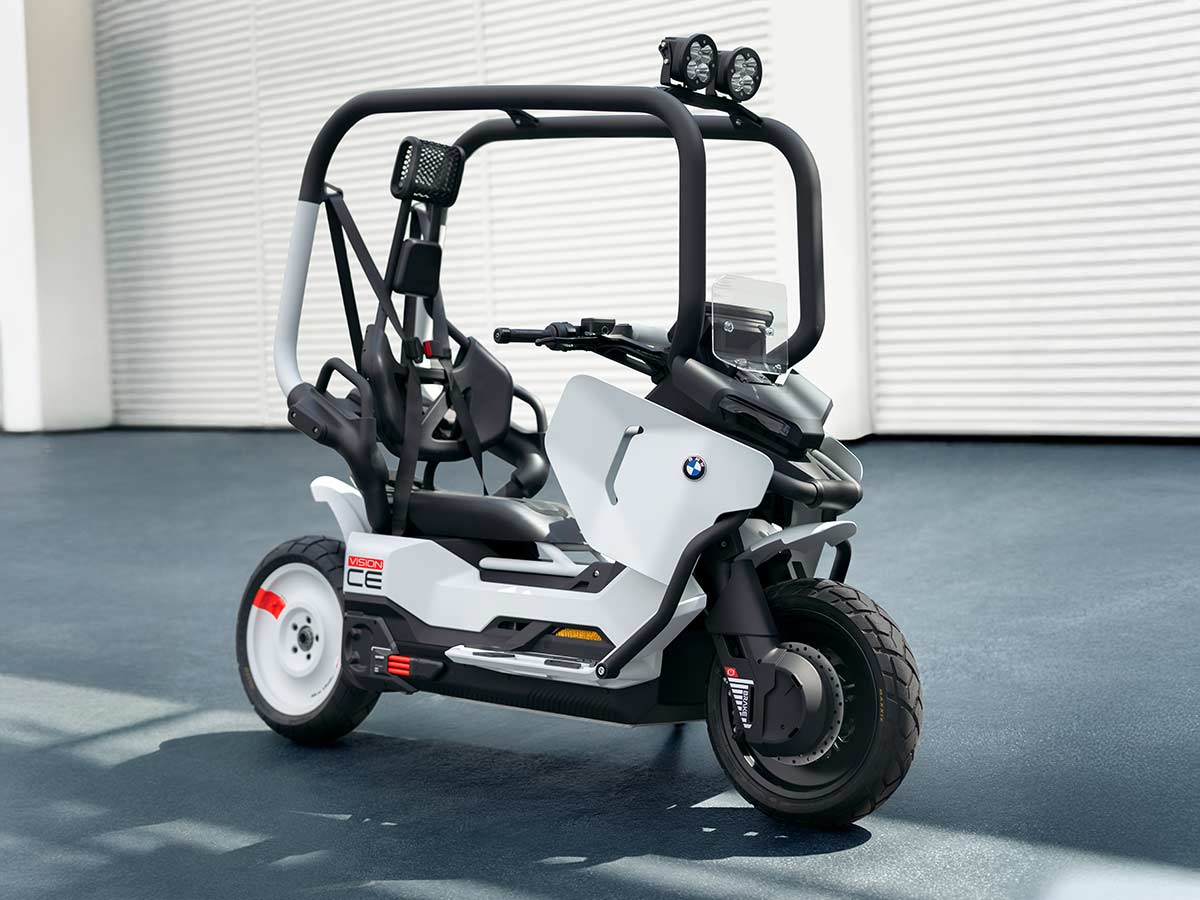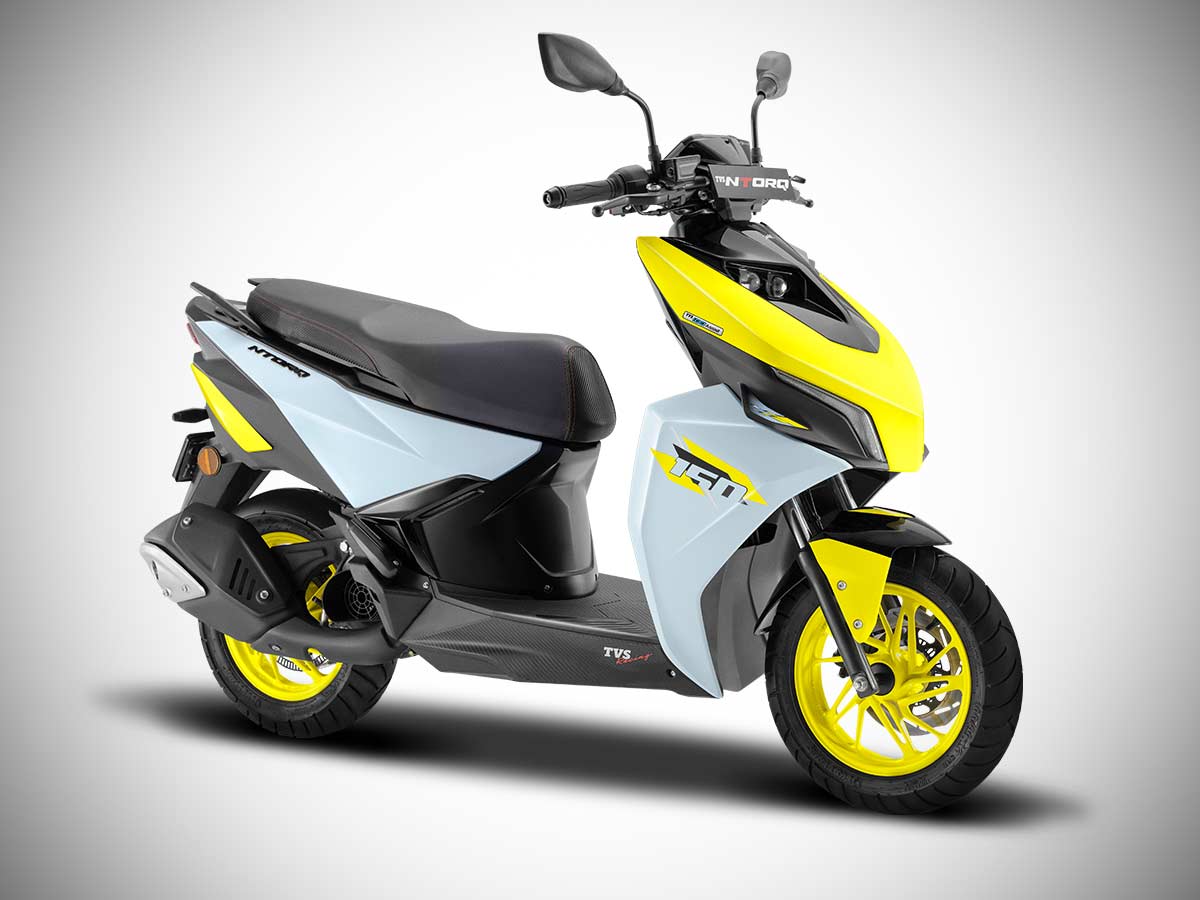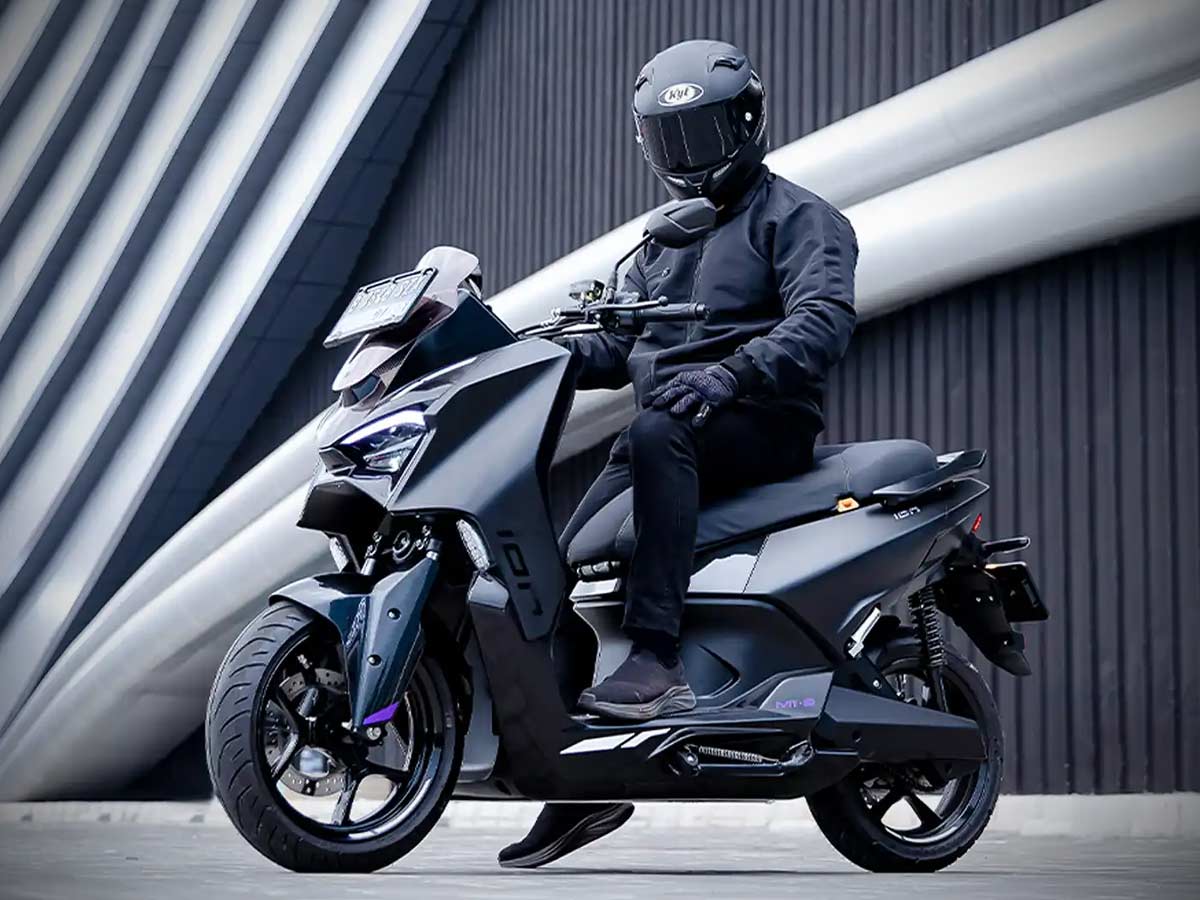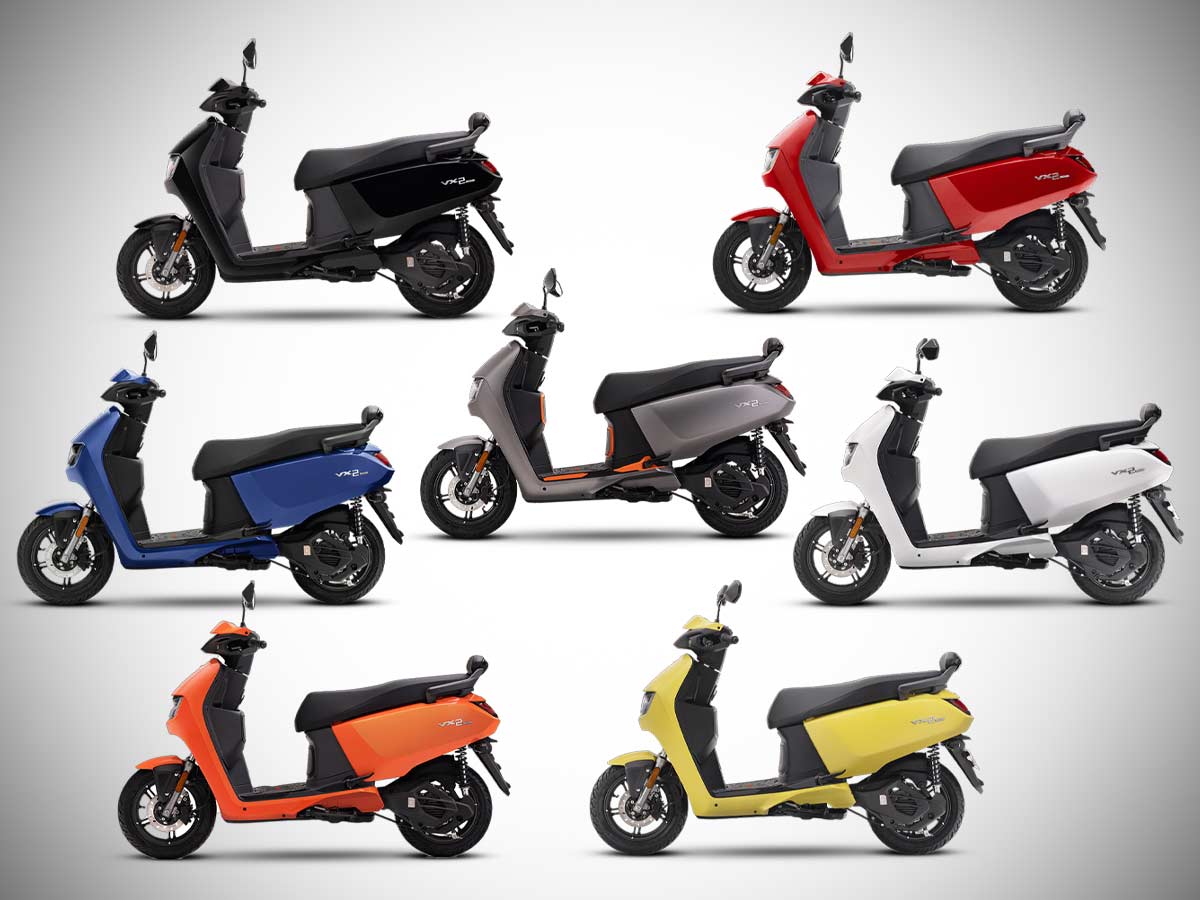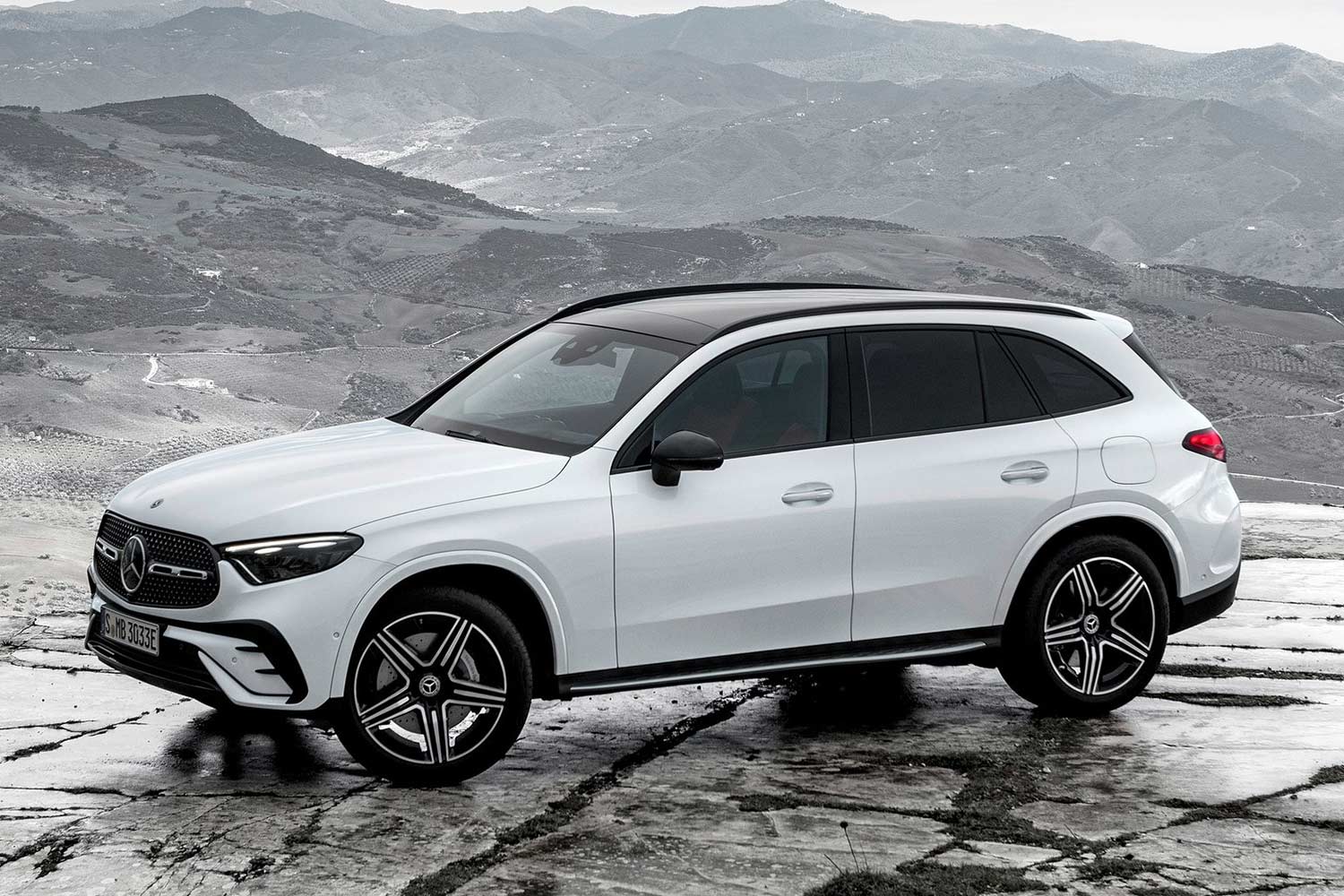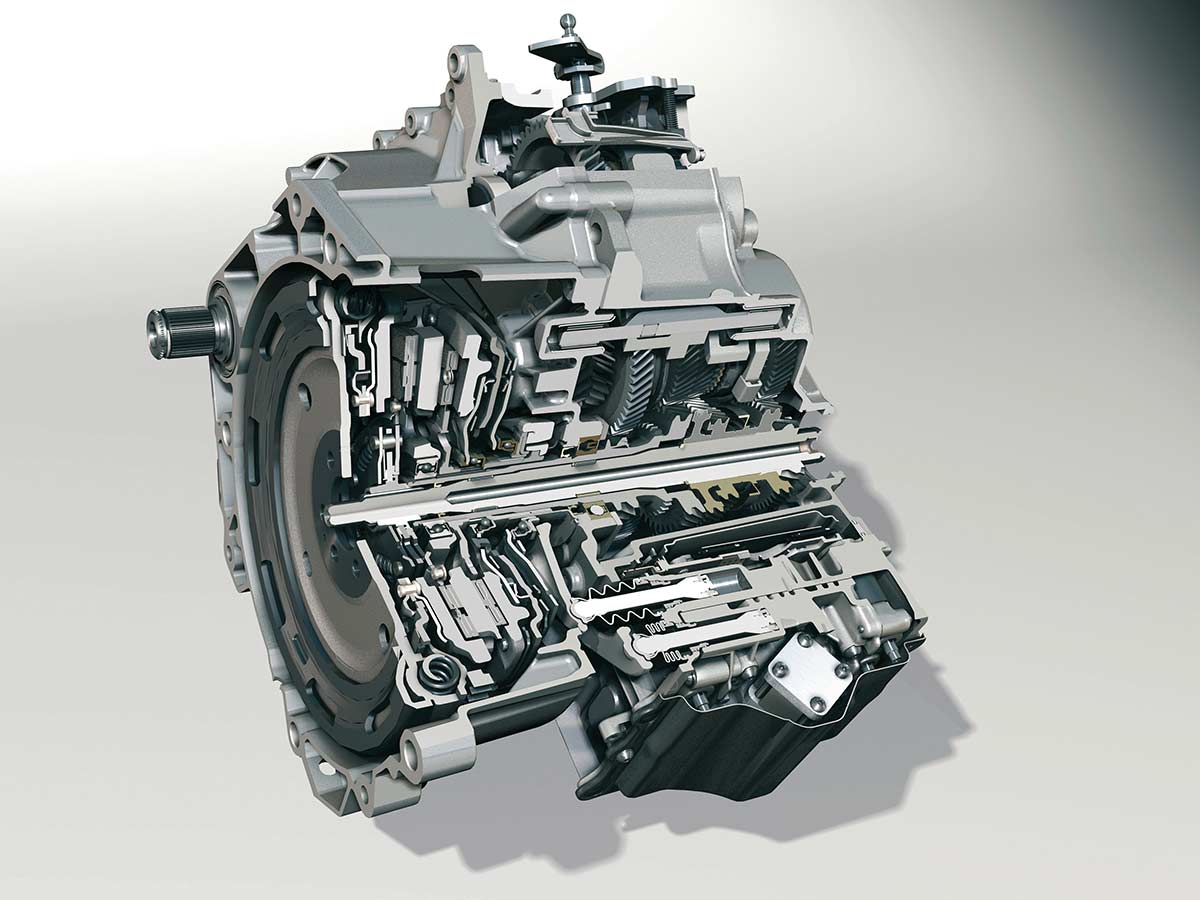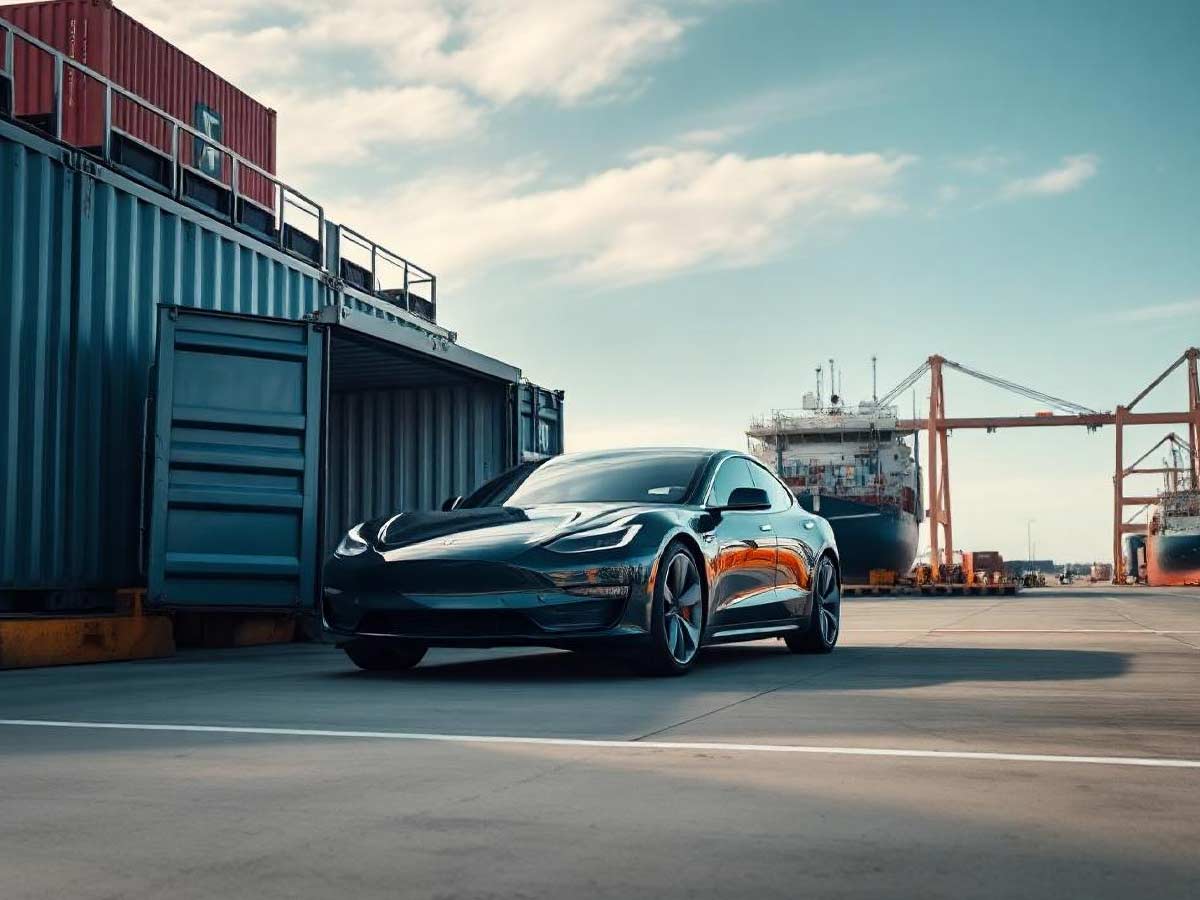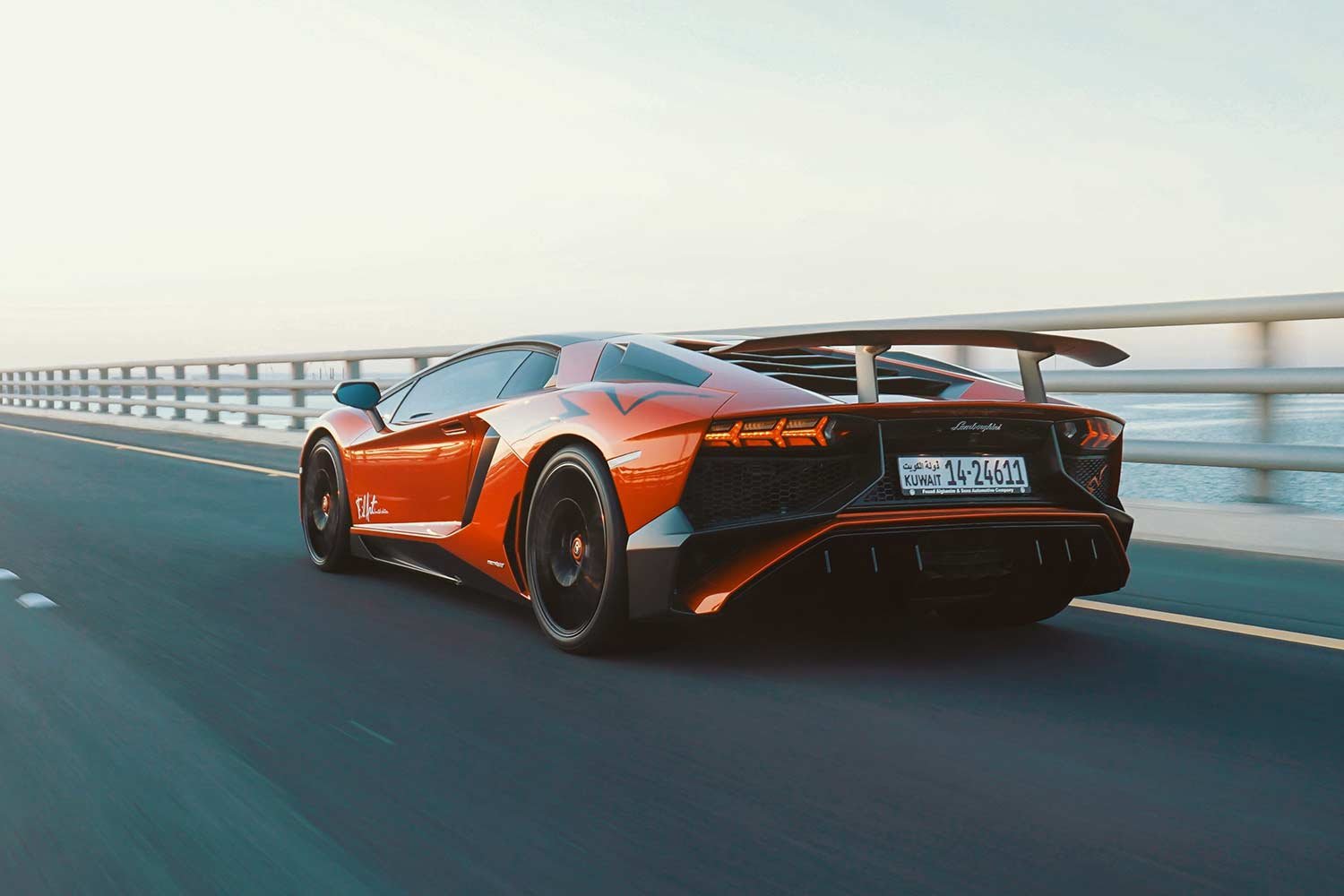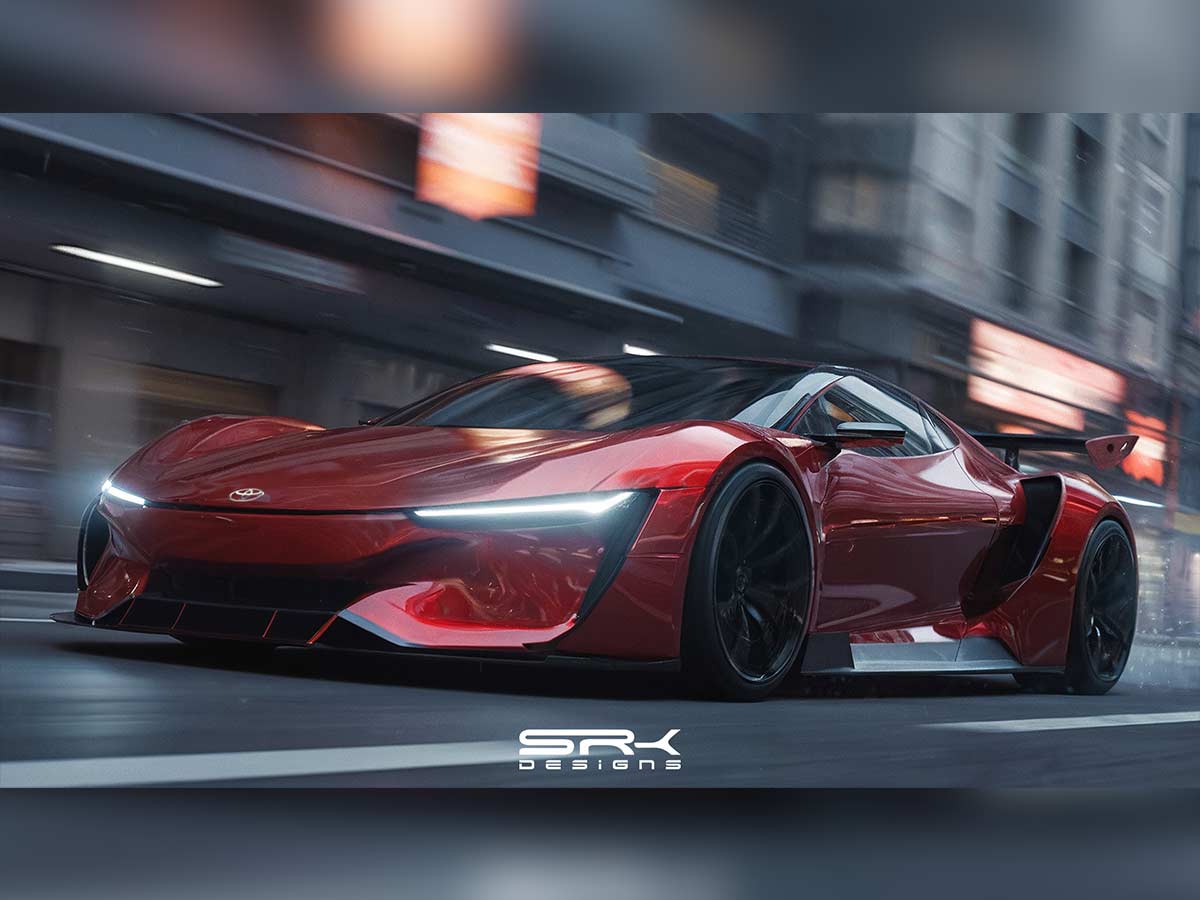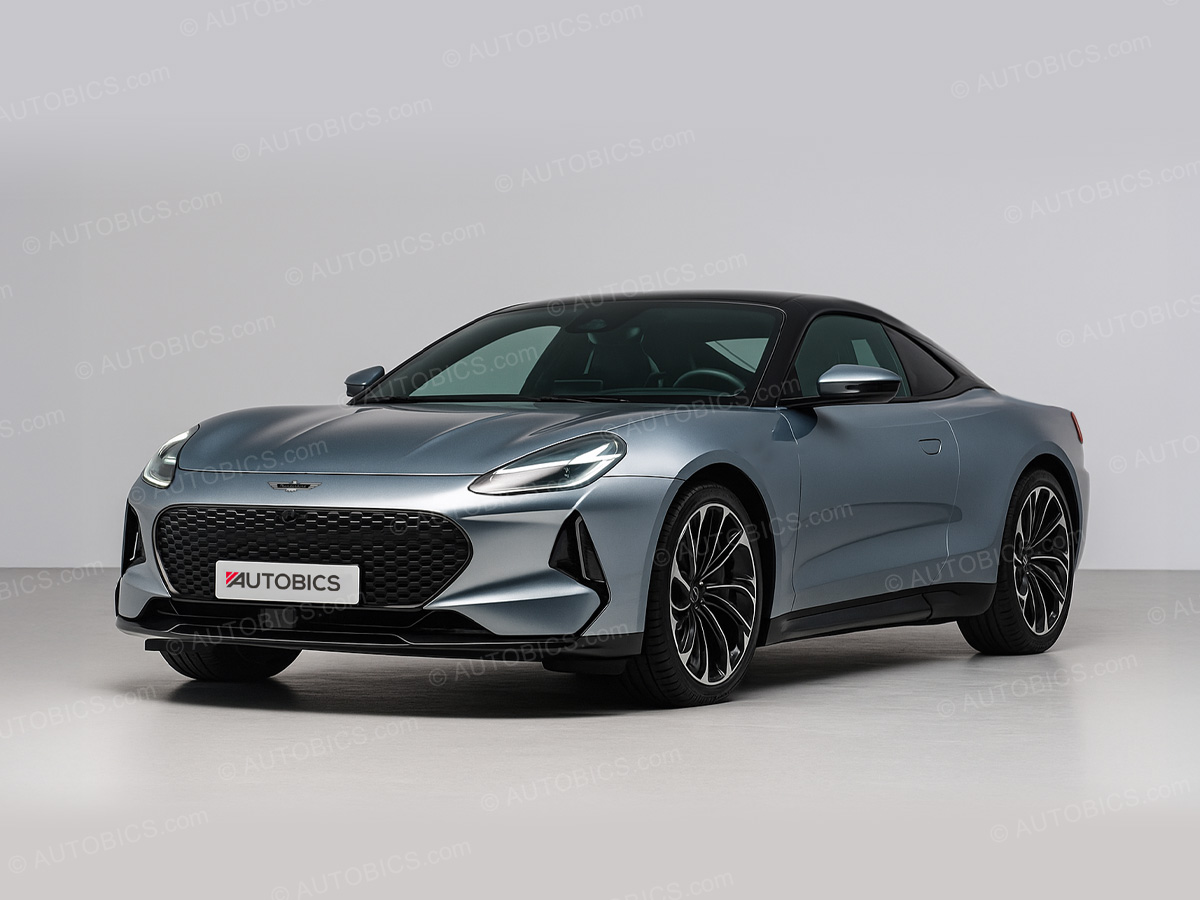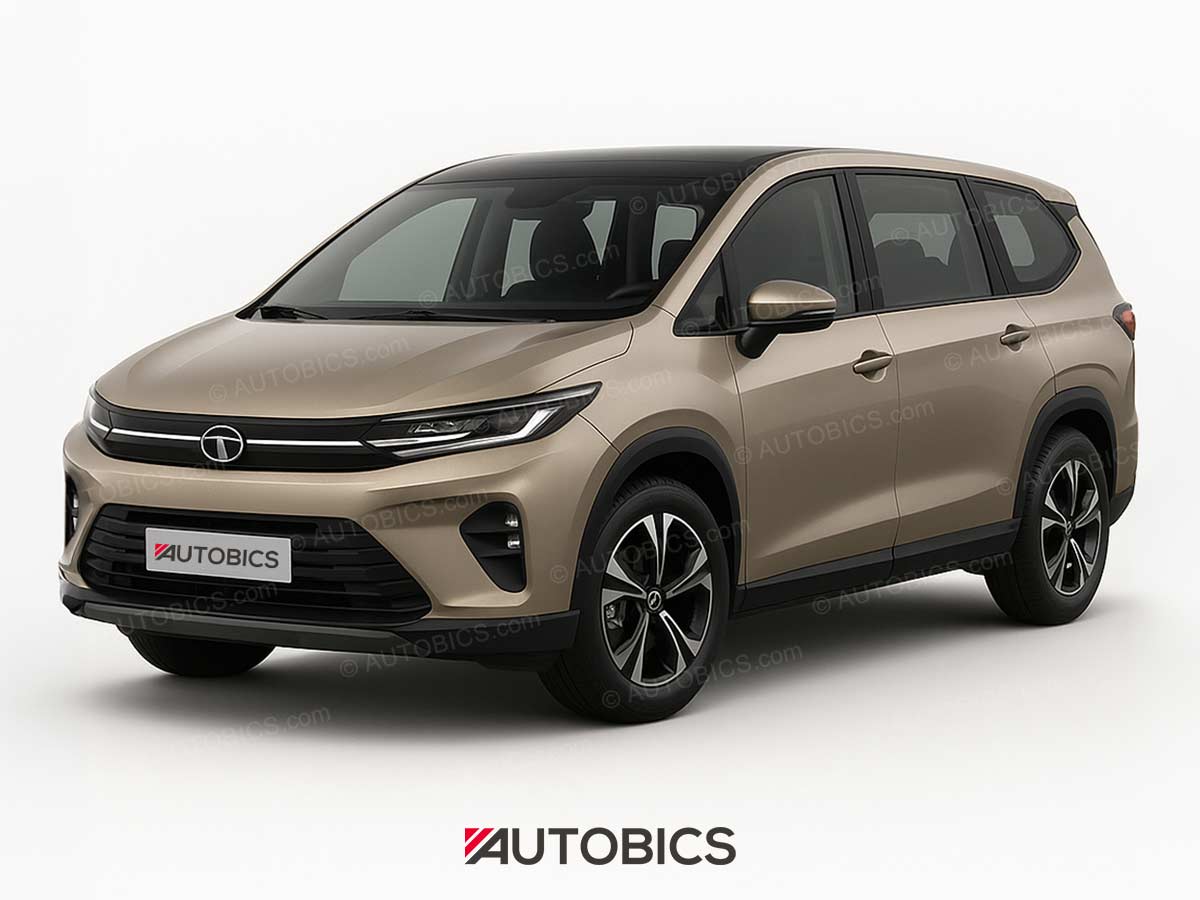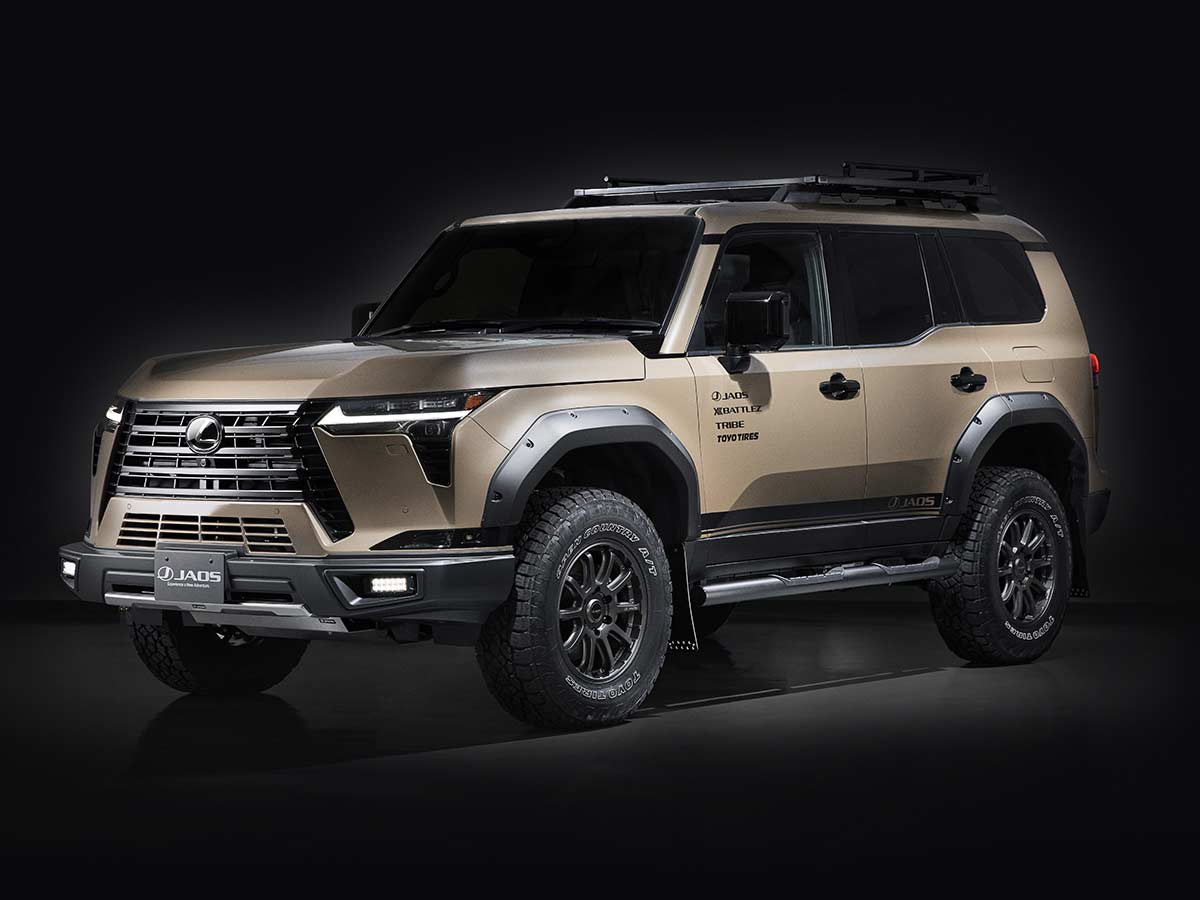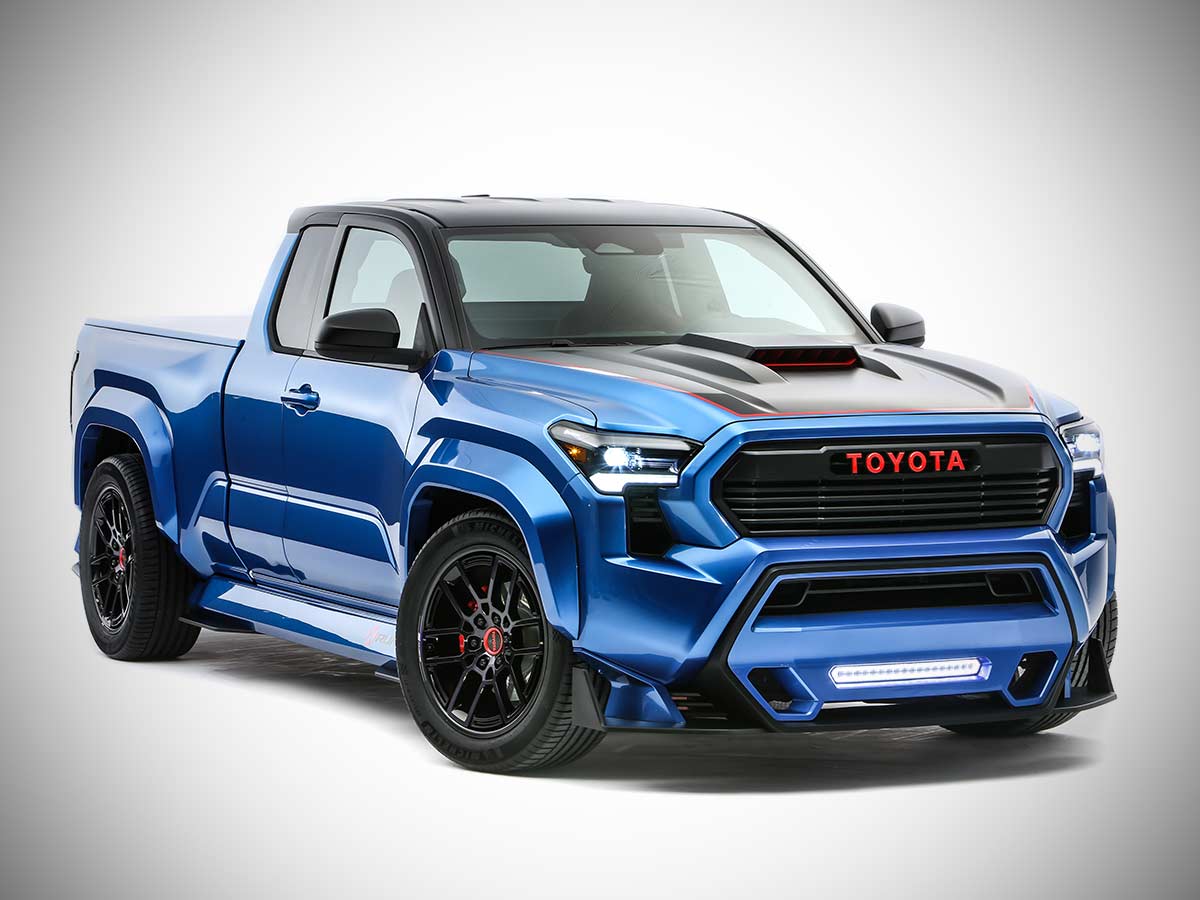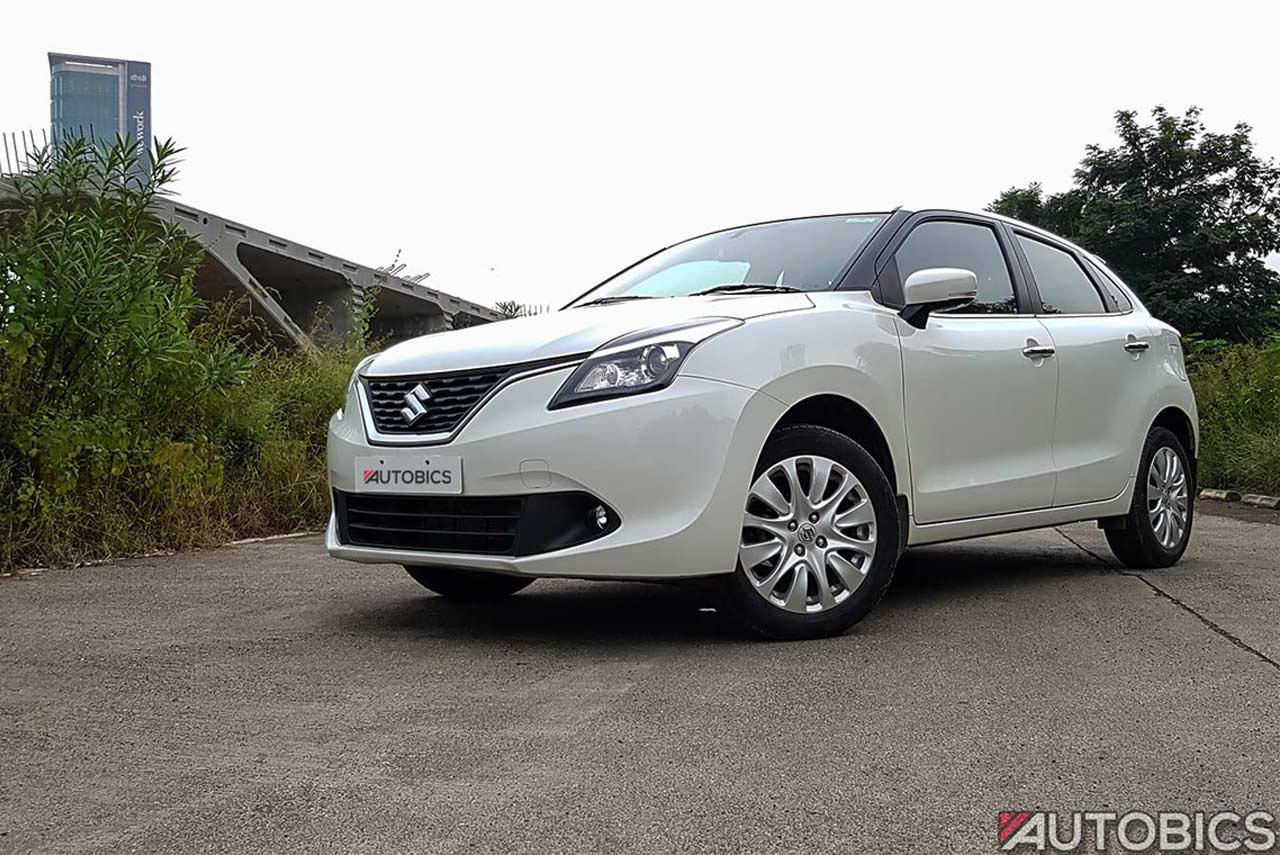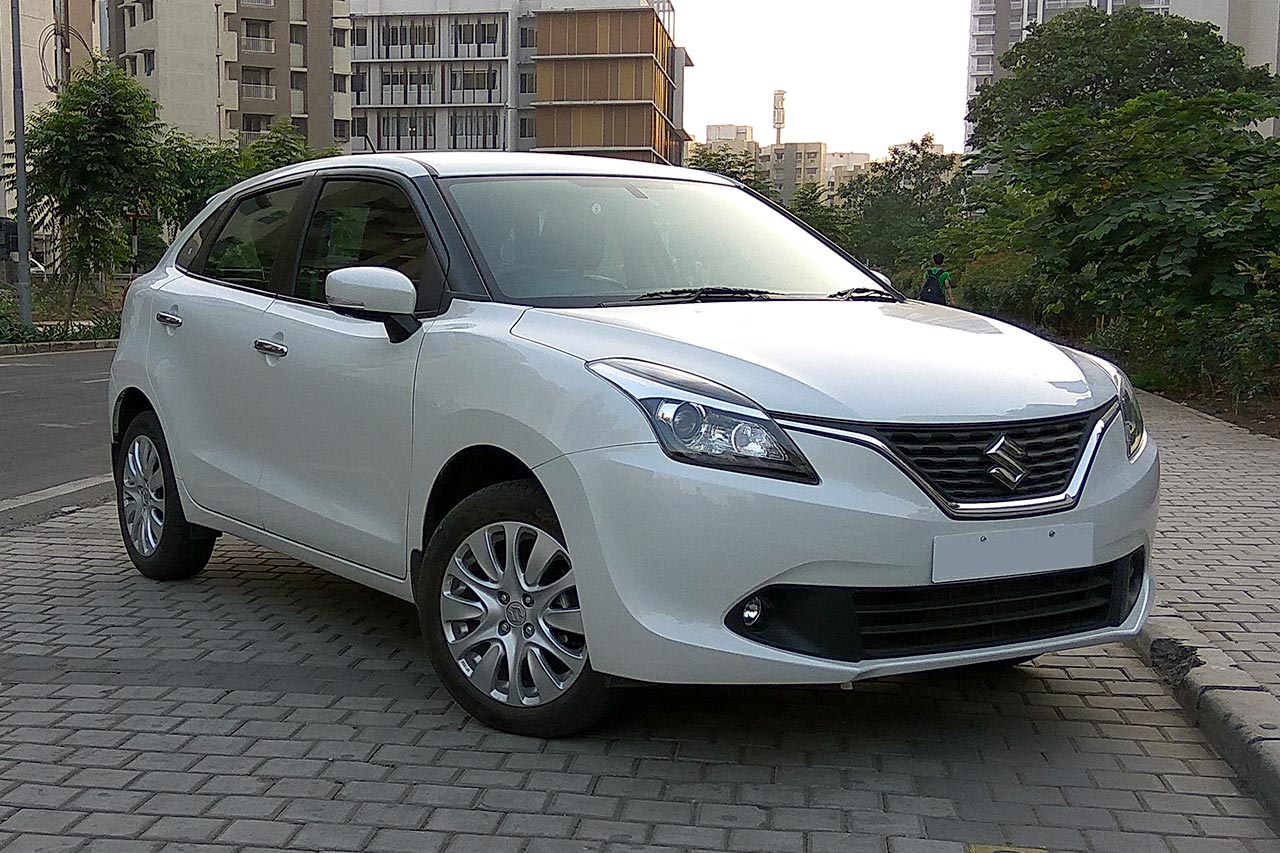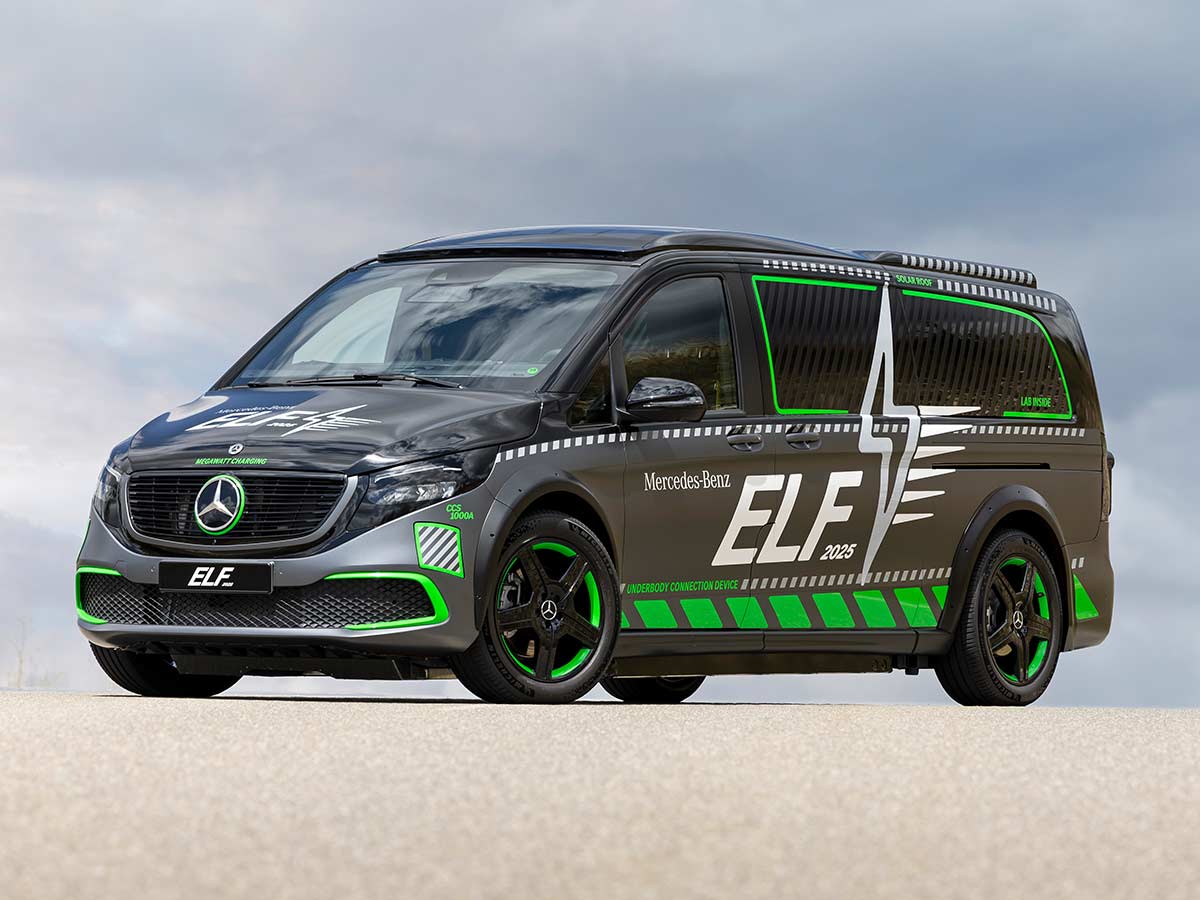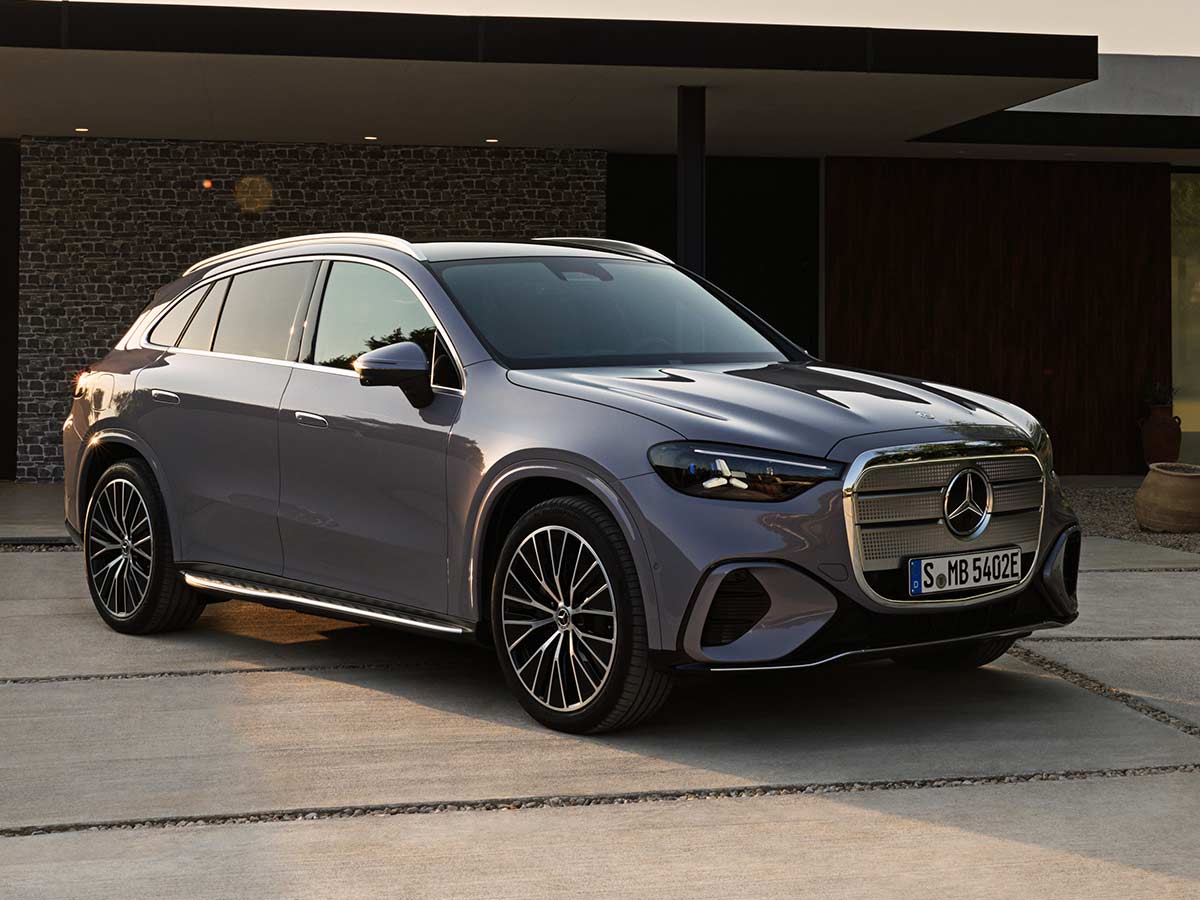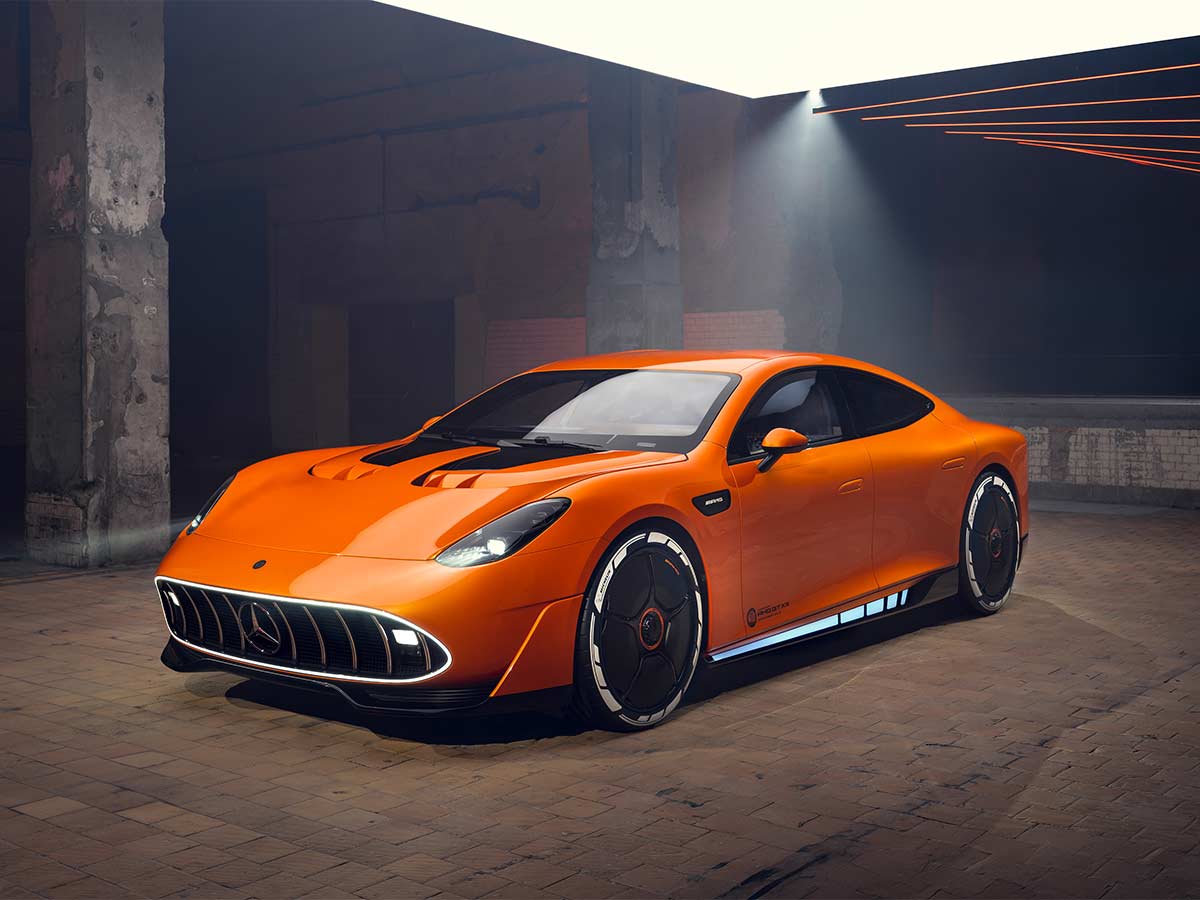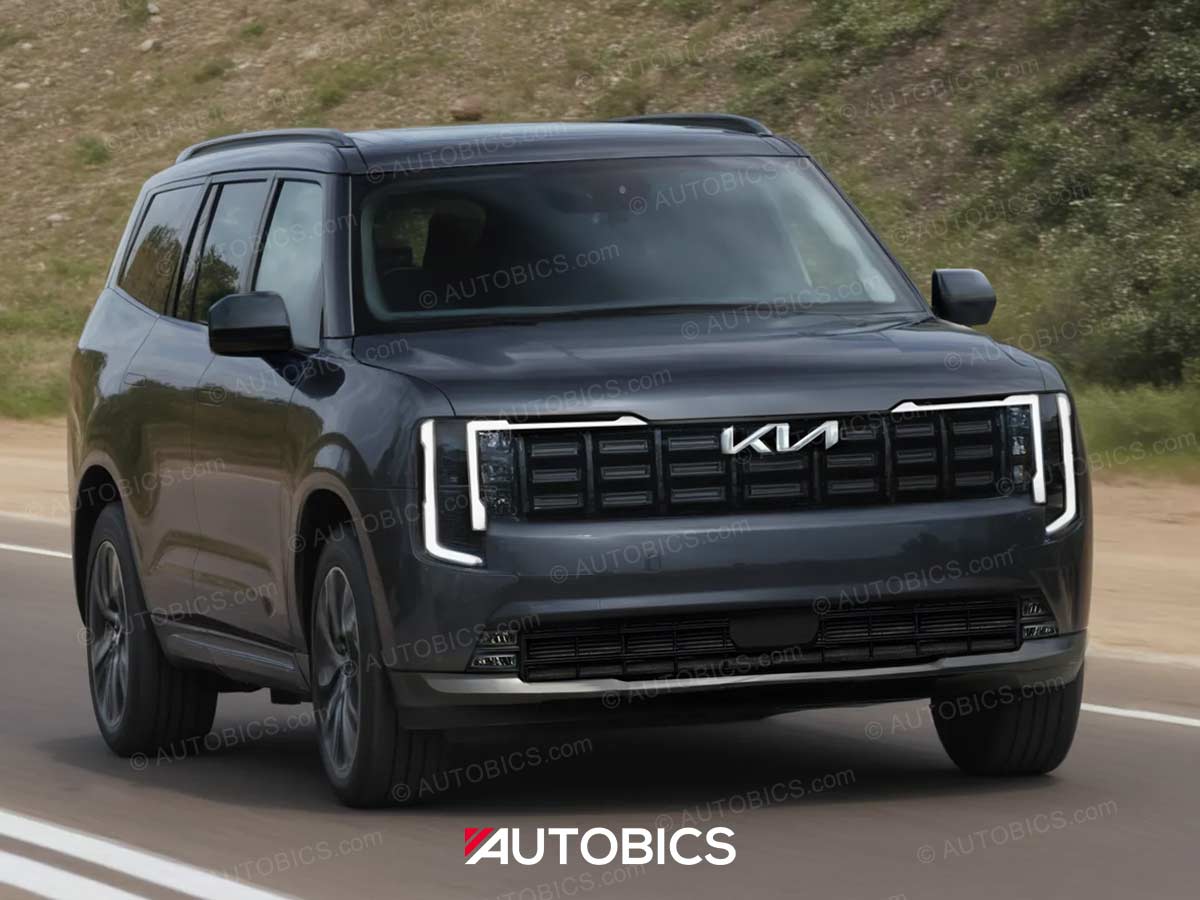The Mercedes-Benz GLB is about to enter into its second generation with a promise of more curves, more tech and an all-new architecture. Spy photos and teasers suggest an upright, “baby G-Wagen” like silhouette, but with a softer front end and sleeker accents. Mercedes’ designers appear to have grafted cues from recent concept and production models – including the star‑pattern headlight motif from the Concept CLA and flush, electrically extending door handles seen on the latest CLA sedan. Early mock-ups and spy shots show boxy body lines remaining (roof rails and squared wheel arches still intact), even as the grille is larger and smoother and the profile gains a gently sloping roof.
One camo‐clad mule revealed in winter testing already wears the new tri‑star headlamp signature and hints at a thin, U‑shaped lightbar across the tailgate. Overall, expect an evolutionary redesign: the GLB’s familiar muscular shoulders and short overhangs give way to a more aerodynamic nose and updated wheel designs, echoing Mercedes’ new compact-car language seen on the latest CLA and GLA.
>>> Great Discounts on Car & Bike Accessories <<<
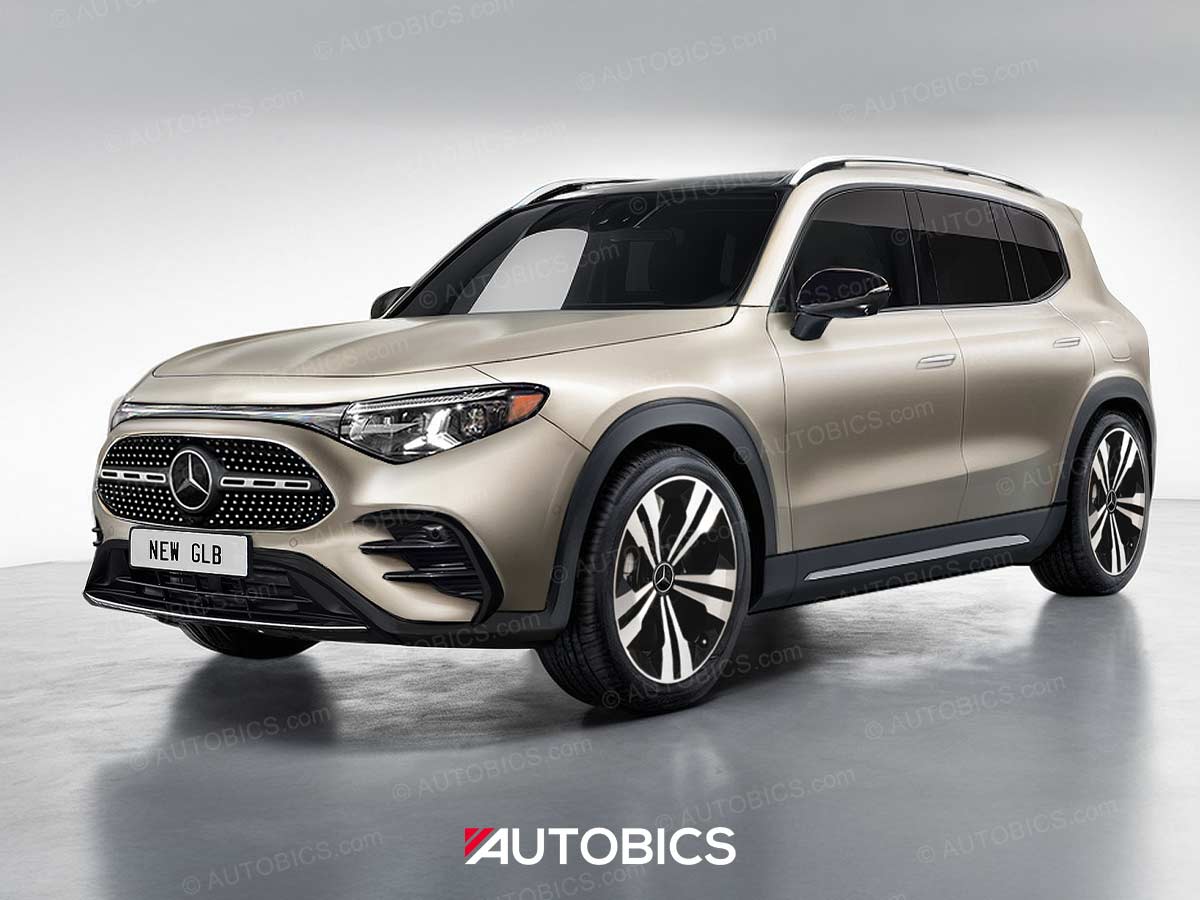
Platform and Architecture: Embracing the MMA EV Skateboard
Underpinning the new GLB is Mercedes’ all-new Mercedes Modular Architecture (MMA) – an “electric-first” skateboard platform designed for battery-electric vehicles while still accommodating small hybrid engines. This is a major shift from the outgoing MFA2 platform (shared with the current A‑Class and GLA). MMA brings high-voltage components and next-generation drive units derived from the luxury segment: a rear-mounted 200‑kW (≈272 PS) permanent‑magnet motor as standard, and an 80‑kW front motor in AWD versions. Together these yield around 375–380 PS in dual-motor form, or a single-motor RWD variant of about 272 PS. Crucially, MMA is built with an 800‑volt electrical system for ultra-fast charging (targeting up to 250–320 kW DC). In fact, Mercedes confirms MMA models will use 800V silicon-carbide inverters and multi-speed e-transmissions to boost efficiency.
Yet MMA remains versatile: it also natively supports 48‑volt mild-hybrid drivetrains. The new GLB will offer petrol engines from Mercedes’ FAME (Family of Modular Engines) lineup with an integrated 48V motor/generator. These hybrid units (likely a 1.5L turbo inline‑4) will have a small e‑motor (≈20 kW) built into an 8-speed dual‑clutch gearbox. Mercedes’ press materials confirm this 48V system can coast and run on electric power up to ~100 km/h, and will be offered in three power levels (approximately 100, 120 and 140 kW, or 136/163/190 PS). The system includes a 1.3 kWh lithium-ion battery pack for the electric boost. In short, the new GLB will not only spin off an EV (replacing the EQB), but also carry forward the GLB’s ICE heritage with efficient mild-hybrid 4-cylinder engines. Four‑ and all‑wheel drive layouts return, and an AMG‑tuned version (with hybrid assistance) is expected as well.
Powertrains: From 48V Hybrids to Full BEVs
The second-gen GLB will be offered with both pure-electric and gasoline (hybridized) powertrains. On the EV side, Mercedes has already described the electric GLB as effectively “GLB with EQ Technology” – part of its move away from separate EQ nameplates. It will use the same MMA EV tech as the new CLA: the RWD variant gets a 200 kW (≈272 PS) rear motor, while 4MATIC models add an 80 kW front motor (total ≈380 PS). Customers can choose from two battery packs: a smaller 58 kWh pack (likely with LFP cells) and a larger 85–88 kWh pack (NMC chemistry with silicon‑oxide in the anode). The larger pack is said to yield up to ~750 km (WLTP) in the new CLA sedan; the boxier, heavier GLB will have somewhat less range, but should exceed the ~330 mile range of today’s EQB. On a practical note, MMA’s 800V system promises superfast DC charging – up to ~250–320 kW peak, giving roughly 248 miles of range in 15 minutes in CLA testing. The new GLB EV will also use a two-speed transmission on the rear motor for strong low-speed punch and relaxed high-speed efficiency.
For the ICE/mild-hybrid lineup, Mercedes will likely resurrect the GLB’s current 2.0L offerings in spirit, but updating them to the new 1.5L FAME four-cylinder turbo. Each engine is paired with a 48V belt-alternator or DCT-mounted e-motor (~20 kW) and a 1.3 kWh battery. This mild-hybrid “EQ Boost” system enables electric coasting and modest EV-only driving (especially in city traffic). Output figures will mirror the CLA’s tuning: roughly 136 PS, 163 PS, and 190 PS for the three variants, each with about +20 kW from the hybrid motor. Like today’s GLB, front- and all-wheel drive are both offered with the ICE models. Expect the new GLB’s non‑AMG trims to match or slightly exceed the current GLB250’s ~221‑hp output, but with improved efficiency. (A future plug-in hybrid is not yet confirmed, so we focus on 48V hybrid tech.) An AMG‑GLB 45 or 35 variant with around 500 hp is also rumored, likely combining the 2.0L turbo with a more potent electric boost.
Technology & Interior: MB.OS, AI, and Sustainable Luxury
Inside, the next GLB will showcase Mercedes’ latest cockpit technology. The old dual 7–10″ screens will give way to a larger, integrated display that flows from behind the steering wheel to the center of the dash, driven by the new MB.OS platform. Indeed, Mercedes says GLB will debut its new chip‑to‑cloud OS with AI capabilities – including a “Generative AI” virtual assistant – building on the Concept CLA’s revelation of onboard AI and a water‑cooled processor. In practical terms, this means far more responsive voice control and personalization. One report notes the GLB will get “a brand-new MB.OS infotainment system, with bigger displays and a greater level of AI integration than ever before”. We can also expect the curved glass touchscreen to “float” on the dash as in the CLA Concept, plus a revamped digital gauge cluster, gesture controls and Mercedes’ latest steering-wheel touch buttons.
Quality and sustainability will be emphasized. The GLB’s cabin layout likely inherits the CLA’s modern dashboard proportions (tubular aluminum trim at the base, digital controls), and it will continue to offer up to seven seats like today. Materials will aim high: Mercedes previewed pillar-to-pillar displays and one-piece seat cushions in sustainable Nappa leather for the CLA concept. Similarly, the GLB may use eco-friendly fabrics (hard plastics reduced) and ambient lighting. We also expect the GLB to retain flexible space with sliding second-row seats and a fold‑flat third row – a key GLB selling point. By layering luxury and tech, the new GLB should feel more upscale inside than the outgoing car, even while preserving the rugged, functional vibe (visible onscreen graphics allude to off-road themes, analogous to the aluminum “off-road” elements on the Concept GLB’s dash).
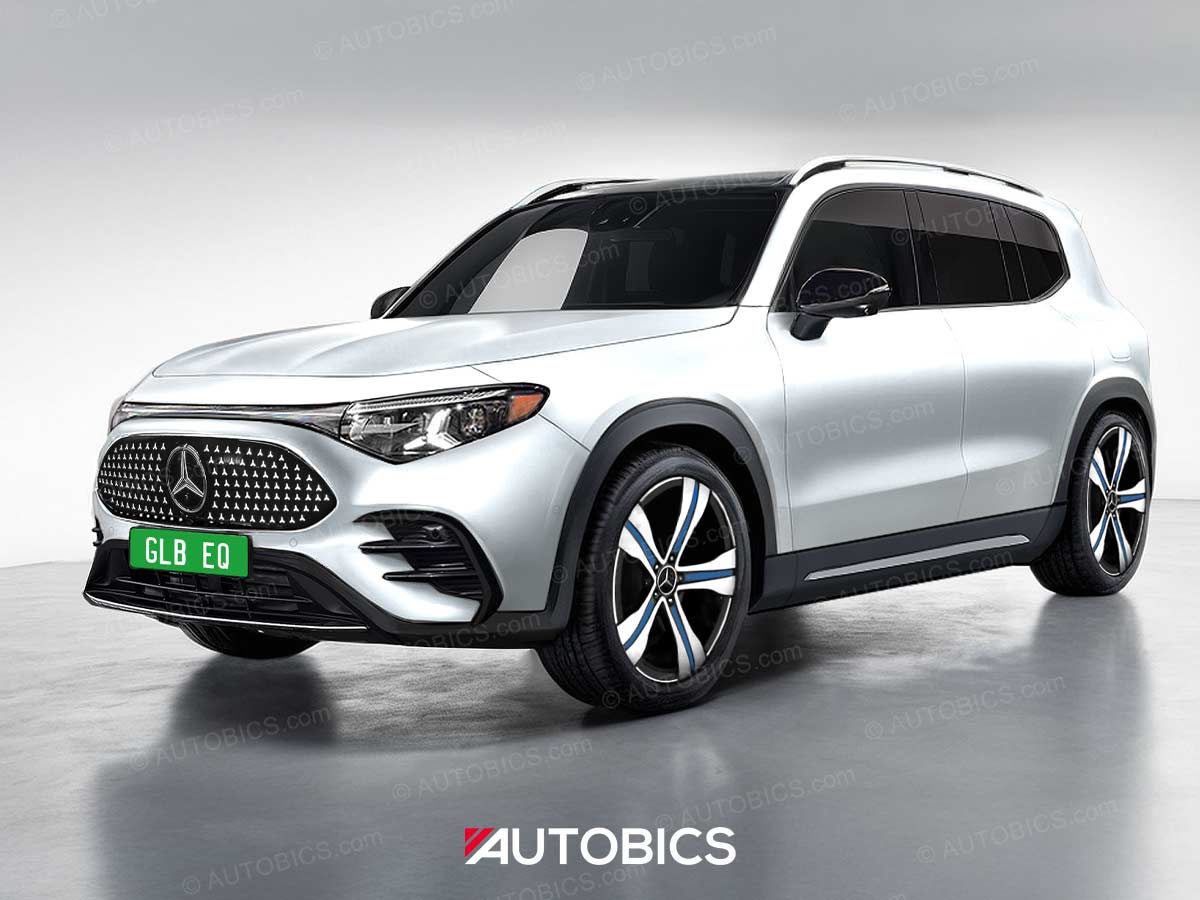
Advanced Safety & Driver Assistance
Safety tech in the new GLB will be state-of-the-art. Standard systems will include Adaptive Cruise Control, active lane-keeping and emergency braking, as well as surround-view cameras and blind-spot monitoring. Mercedes is also rolling out highly advanced hands‑free driving aids. In Europe, Drive Pilot (SAE Level 3) is being extended to 95 km/h on highways, and in the U.S. Mercedes’ new Drive Assist Pro (AI‑powered, near-L3 urban driving) is coming in 2026. While it’s unclear which markets will get what, the GLB will at least support Mercedes’ upcoming AI-based ADAS. For example, Drive Assist Pro uses multiple cameras, radars and AI to “figure out the most efficient route and handle city driving”. Expect the GLB to offer this when regulations allow, along with improved Emergency Stop Assist, automated parking, cross-traffic alerts, and perhaps an optional LiDAR (as Mercedes is integrating in higher-end models). In short, the new GLB will come with “even greater comfort and safety” as Mercedes’ CEO promises, combining long-standing systems (Active Brake Assist, etc.) with the latest generative‑AI assistants and partial self‑driving modes.
Launch Timeline, Production & Markets
Mercedes aims to unveil the new GLB by early 2026, in tandem with the rest of its compact MMA lineup. The first teasers appeared in late 2023, but full camo prototypes only emerged in late 2024. Production will likely start in mid-2026, with sales ramping into late 2026 for Europe, China and other markets; a U.S. launch would follow shortly after. As with the current GLB, manufacturing should occur in Mexico (Aguascalientes) for the Western Hemisphere, and in Beijing, China for Asia. Notably, the electric GLB (formally “GLB with EQ Technology”) replaces the current EQB model. Mercedes has quietly shifted its EV naming: future electric variants won’t carry the standalone “EQ” name but will simply be called, for example, GLB 250+ or GLB 300 4MATIC (analogous to how the G-Class dropped “EQG”). In other words, expect GLB diesels/gas/MHEV and GLB EVs to share the marquee name; the EQB nameplate will disappear when the GLB hits showrooms.
Competitive Landscape
The GLB sits in the crowded compact luxury SUV segment. Its unique selling point has always been practicality – boxy packaging and an optional third row – at the cost of being slightly larger and more expensive than some rivals. Key competitors include the Audi Q3 and BMW X1/X2 (both lack a 3rd row), the Volvo XC40 (and Polestar 2 EV counterpart), Lexus’s compact SUVs (UX/NX), and Japan’s Genesis GV70. The GLB’s nearest rivals (Q3 and X1) start a few thousand dollars lower than the GLB’s ~$47K base price. The upcoming GLB EV will challenge electric peers like the Audi Q4 e-tron and Volvo C40/XC40 Recharge, though its GLB EV will likely be slightly more expensive due to premium branding. In any case, Mercedes is positioning the new GLB a notch above mainstream compacts – extra tech and luxury justify its pricing. For context, the current GLB 250 starts around $46,950 (2025 model); the new model, with its high-tech enhancements, may command a premium yet remain competitive against higher-end crossovers.
Rumors & Strategy: Ditching the EQB
Many industry insiders see the new GLB as part of Mercedes’ broader strategy to simplify its lineup. Rather than maintain a separate EQB electric sub-brand, Mercedes will “absorb” the EQB into the GLB family. In practice, that means the electric version will simply be the GLB with “EQ Technology” – no EQB nameplate. This aligns with recent statements that future EVs will use traditional model names (e.g. CLA 250+, G 580 with EQ tech) rather than EQ-badges. The rationale is twofold: first, to reduce model proliferation, and second, to reassure customers that EV variants are just as much “Mercedes” as the gas cars. In other words, the GLB and its EV twin will share the same marketing and equipment features, distinguished only by powertrain. This strategy lets Mercedes allocate the “EQ” label mostly to technology (e.g. “with EQ Technology” suffix) and focus on brand consistency. Word on the street is that the next GLB effectively replaces the EQB – Mercedes’ dealer communications even hint that “EQB replacement will arrive soon” alongside the new GLB.
In summary, the next-gen Mercedes GLB appears poised to keep all the practical virtues of today’s seven-seater while leaping forward on tech and electrification. Its advent marks a clear break into Mercedes’ new MMA-era compact lineup, promising high efficiency (drawing lessons from the EQXX concept) and a refined interior. Spy and teaser materials suggest a first-gen feel with a modern twist: familiar proportions, new details. Customers can expect a 2026 launch for Europe and China, followed by the U.S., and pricing likely to start in the mid-$50Ks given the current model’s baseline. With rivals readying their own refreshes, the GLB’s task will be to blend Mercedes’ luxury DNA with the latest EV and AI technologies – a “sustainable choice that is a cut above the rest,” as Mercedes put it
